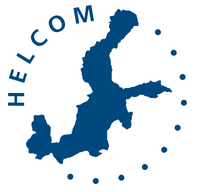BaBiDaPi
Baltic Biodiversity Data Pipeline – Connecting the HELCOM Biodiversity database to EU-DTO
Background
HELCOM monitoring programmes provide data for assessments of the Baltic Sea environment, and its Data and Information Strategy promotes open access through public databases. The Baltic Biodiversity Data Pipeline project aims to establish a pipeline from the HELCOM Biodiversity database to EMODnet Biology. It focuses on species observation data, which is not part of the regular data flow from HELCOM Contracting Parties to the ICES DOME database, such as those from HOLAS3, Red List and Checklist projects. Part of this data is already available from the HELCOM Biodiversity database, but adjustments to data models and attributes are needed to meet EMODnet requirements. The pipeline will be configured from the HELCOM ArcGIS Enterprise platform and maintained within HELCOM’s infrastructure. This will support the DTO-BioFlow (Integration of biodiversity monitoring data into the Digital Twin Ocean) by enabling access to harmonized biodiversity data compiled by HELCOM.
Objectives
To build capacity within HELCOM to improve the HELCOM Biodiversity database platform by:
- Performing extensive quality control and harmonization of the data currently available in the HELCOM Biodiversity database
- Establishing EMODnet biology-based data formats as a standard to be applied in future HELCOM species observation data collections
- Sharing selected HELCOM biodiversity data with EMODnet Biology.
- Finalizing the harmonization of HOLAS3 and Red List 2 data into the HELCOM Biodiversity database.
- Optimizing the HELCOM Biodiversity database performance to accommodate large data volumes and future observation data collections
Approach
To address the challenge of fragmented and heterogeneous biodiversity data, the project is structured around six key tasks:
Task 1: Inventory of historical datasets and selecting relevant datasets in collaboration with EMODnet
Task 2: Harmonizing selected datasets to the EMODnet biology data model (OBIS-ENV-DATA)
Task 3: Configuring the HELCOM Biodiversity database to ensure compliance with EMODnet biology requirements and improve database performance
Task 4: Setting up an Application Programming Interface (API) that can deliver HELCOM Biodiversity data, mapped to the EMODnet biology data model, to EMODnet.
Task 5: Establishing an Integrated Publishing Toolkit (IPT)to publish and share biodiversity datasets through the Global Biodiversity Information Facility (GBIF) network
Task 6: Coordinating all activities and stakeholder communication
This work will address key data quality and compatibility issues by mapping species observations to standardized formats, validating and optimizing database structures, and enabling automated or semi-automated data flow to EMODnet Biology.
Key outputs of the project include: (1) a functional and sustainable data pipeline from HELCOM to EMODnet Biology; (2) harmonized biodiversity datasets (3) an updated HELCOM Biodiversity database structure and improved IT infrastructure; and (4) public access to data via a robust API and IPT service.
Implementation
The project is implemented solely by the HELCOM Secretariat, which serves as both the project lead and technical coordinator. HELCOM is responsible for improving the HELCOM Biodiversity database, performing data harmonization and quality control, and establishing the data pipeline to EMODnet Biology.
HELCOM will manage data submitted by the Contracting Parties, applying the HELCOM Data and Information Strategy, and ensuring that the processed data meets EMODnet Biology standards. The Secretariat will also handle the necessary IT infrastructure upgrades, maintain the resulting services, and coordinate with EMODnet Biology representatives to define data scope and ensure compliance throughout the project.
Funding
This project was funded as part of the DTO-BioFlow Second Open Call for Marine Biodiversity Data, which supports initiatives enhancing the availability and quality of marine biodiversity data for integration into the EU Digital Twin Ocean (DTO).
Project duration
May 2025 – April 2026
Contacts

Serita van Zweel
Project Researcher
serita.vanzweel@helcom.fi

Andžej Miloš
GIS Applications Developer
+358 40 628 1869
